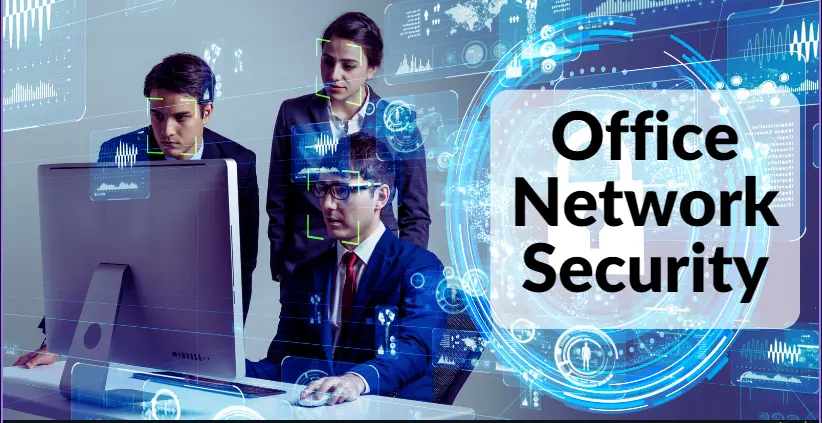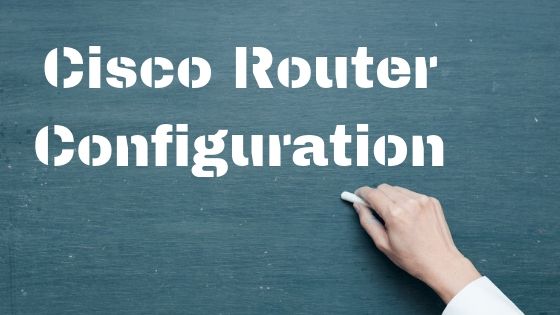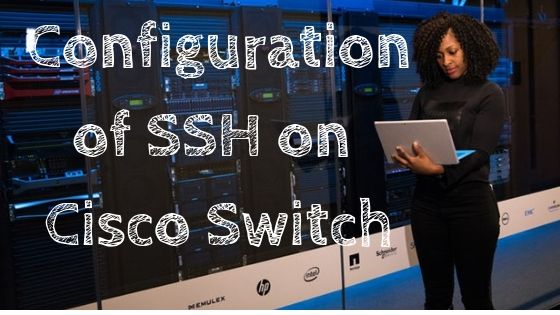
In today’s interconnected world, where data flows seamlessly through digital channels, protecting your office’s network security is no longer a luxury but an absolute necessity. The consequences of a network breach can be devastating. And leading to compromised sensitive information, financial losses, and a severe blow to your company’s reputation. As such, it’s crucial to adopt top-notch security measures to safeguard your office’s network.
Office Network Security
Whether you are a new business owner, or simply looking to strengthen an existing security plan. In this article, we will explore the most effective methods for bolstering your office’s network security. By implementing these strategies, you can create a robust defence system that mitigates risks. And these techniques help you to keep your sensitive data out of harm’s way.
1. Invest In Quality Copper Structured Cables
The network infrastructure’s quality plays a crucial role in determining the security and reliability of your office’s network. In particular, the choice of network cables used can have a substantial impact on these aspects. As such, investing in high-quality copper structured cables like the ones on offer at WB Networks, is essential for maintaining a secure and robust network environment.
There are a few key benefits to using high-quality networking cables. These include:
- Data Integrity & Reliability – Copper structured cables, like Cat 6 or 6a cables, provide excellent data transmission capabilities. Network cables are designed to minimise signal degradation and electromagnetic interference, ensuring reliable and consistent data transfer. By using quality cables, you can reduce the chances of data loss, corruption, or unauthorised access during transmission, enhancing the overall integrity of your office network.
- Future-Proofing Your Network – Technology is constantly evolving, and network requirements are ever expanding. By investing in quality copper structured cables, you’re effectively future-proofing your network infrastructure. These cables are designed to support higher data transfer speeds and bandwidth. And effectively providing a solid foundation for future network upgrades. And ensuring that your office’s network remains as scalable as it is secure.
- Compliance With Industry Standards – Finally, using high-quality copper structured cables can help your office stays compliant with industry standards. These cables undergo rigorous testing and certification processes to meet specific performance and safety requirements. It help ensure your network infrastructure meets all relevant industry and security standards.
2. Implement A Firewall
Implementing a firewall is a fundamental step in securing your office’s network. As these nifty assets are designed to act as a barrier between your office network. And the wider world web, monitoring and controlling network traffic as it enters and leaves the parameters of your network.
Additionally, a firewall allows you to define and enforce access control policies. You can specify which types of network traffic are allowed or denied based on protocols, ports, or IP addresses. By configuring your firewall to block unnecessary ports and protocols, you minimise the attack surface, reducing the risk of unauthorised access and potential exploits.
When choosing the ideal firewall for your office network, we highly recommend opting for next-generation firewalls (NGFWs) that offer advanced features beyond traditional firewalls. NGFWs integrate deep packet inspection, application awareness, and user-based policies for enhanced network security. These features provide more control over network traffic. Which allowing you to identify and block specific applications or web content that may pose security risks.
3. Regularly Update Software & Systems
Regularly updating software and systems is a critical practice for bolstering your office’s network security. This is because outdated software and operating systems can become vulnerabilities that cybercriminals exploit. Software updates frequently contain patches designed to address known security vulnerabilities, helping to mitigate potential risks. Developers release these patches in response to identified weaknesses or exploits in their software. Regularly applying these updates ensures that your systems are fortified against the latest threats and helps prevent attackers from exploiting known vulnerabilities.
Regularly updating your operating systems is crucial for network security. Operating system updates often include security enhancements, bug fixes, and improved compatibility with newer technologies. By staying current with operating system updates, you benefit from the latest security features and ensure that your systems are running on a secure foundation.

Top Tip: Enabling automatic updates wherever possible simplifies the process of keeping software and systems up to date. Most operating systems, software applications, and security tools offer automatic update options. Enabling the feature ensures automatic updates for the timely application, minimizing the chance of missing vital security patches through manual intervention.
4. Use a VPN
In an era where remote work is increasingly prevalent, it would be imprudent to not mention the need for a secure ‘virtual private network’ in virtually all office settings. A VPN creates a secure and encrypted connection between a user’s device and the office network, regardless of their physical location. By encrypting all network traffic, a VPN prevents unauthorised individuals from intercepting and deciphering sensitive information transmitted over the network. This is particularly crucial when employees connect to the office network from public Wi-Fi hotspots or other unsecured networks, which are susceptible to data breaches.
A secure VPN empowers employees to access office resources remotely with greater peace of mind, knowing that malicious third parties won’t intercept or monitor their connection. Whether employees are working from home, on the road, or at a different branch location. they can establish a secure connection to their office’s intranet or cloud network with the use of a VPN.
5. Secure Wireless Networks
It will come as no surprise that wireless networks can be an easy target for unauthorised access if not properly secured. This is why it is imperative to implement strong authentication protocols and encryption to secure the office network.
For starters, be sure to implement the latest Wi-Fi security standards, such as Wi-Fi Protected Access II (WPA2) or Wi-Fi Protected Access III (WPA3), which provide robust encryption algorithms to protect data transmission. Ensure that strong and unique passwords are used for network access, and consider implementing additional authentication methods like certificate-based authentication. By encrypting wireless traffic and enforcing strong authentication, offices can significantly reduce the risk of unauthorised access and data interception, thus effectively bolstering network security.
6. Backup Data Regularly
Data loss can have severe consequences for any business, ranging from financial loss and damage to a tarnished reputation. To minimise risk, it is crucial to regularly backup data to ensure that critical information, including customer records, financial information, intellectual property, and important documents are protected from unexpected events such as hardware failure, malware attacks, natural disasters, or human error. By maintaining up-to-date backups, offices can quickly restore lost or corrupted data, effectively minimising downtime and mitigating the potential impact of data loss.
We recommend establishing automated backup processes to ensure consistent data backup without human error. Remember that regularly scheduled backups minimise the risk of data loss between backup intervals.
Additionally, it’s always a wise idea to store backups in multiple locations to mitigate the risk of losing data due to a single point of failure. Having offsite backups provides an added layer of protection in case of on-premises disasters or physical theft. By implementing these strategies, offices can successfully safeguard their critical information and maintain the resilience of their operations.
7. Conduct Regular Security Audits
Conducting regular security audits is a crucial practice for bolstering your office’s network security, and it can be a great way to identify vulnerabilities, weaknesses, and potential security gaps in your network infrastructure. Conducting regular audits enables you to identify overlooked pitfalls, such as misconfigured devices, unpatched software, or weak access controls. Not to mention that by understanding the specific risks your network faces, you can implement targeted and tailored security measures, allocate resources effectively, and reduce your company’s risk exposure across the board.
Moreover, regular security audits help ensure that your office network is compliant with relevant industry standards and regulatory requirements. Many industries (i.e. finance, healthcare, and government, to name a few) have specific security standards that must be followed. By conducting audits, you can assess your network’s adherence to these standards and identify any gaps that need to be addressed to maintain regulatory compliance.
Remember — security audits are not just one-time events; they should be conducted periodically to ensure ongoing network security. It is also advisable to engage a professional IT security firm or a qualified internal team to, as their expertise and experience can provide a comprehensive and unbiased assessment of your network’s security.
8. Educate Your Employees
Finally, it’s important to note that human error remains one of the leading causes of security breaches. This is why educating your employees about common security risks, such as phishing emails, suspicious attachments, or visiting malicious websites is paramount. Some of the key security best practices that all employees should master include password hygiene, phishing awareness, safe internet browsing, data handling and protection, and mobile device security.
Conduct regular training sessions, workshops, or webinars to keep employees updated on emerging security threats and best practices. You can also promote awareness through newsletters, posters, or internal communication channels. By educating your employees and promoting a culture of cybersecurity awareness, you empower your workforce to become active participants in safeguarding your office network.
Final Words
And there you have it — 8 essential tips and strategies for bolstering your office’s network security and safeguarding your sensitive data. Remember, network security is not a one-time task but an ongoing process that requires continuous monitoring, adaptation, and employee engagement. So be sure to embrace a comprehensive approach to network security to fortify your digital fortress and navigate the evolving cybersecurity landscape with confidence.













